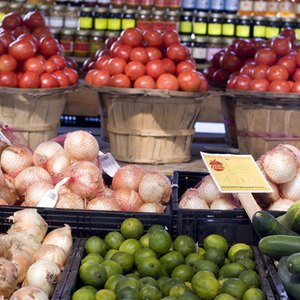
According to NPR, 42 million people in the U.S. received benefits from the food stamp program as of August 2021. The U.S. Department of Agriculture administers the food stamp program, which is also called Supplemental Nutrition Assistance Program or SNAP for short. The goal of this program is to help prevent malnutrition and hunger by providing benefits to eligible low-income families.
Receiving Food Stamps
Individuals who receive food stamps do not get paper coupons or stamps anymore. All participants in this program use an electronic benefits transfer card, which works similar to debit cards. Those who receive food stamps have money deposited into an EBT account on a monthly basis. The money received varies by household.
Food Stamp Eligibility Requirements
To receive food stamps, an individual must be a U.S. citizen, immigrant who is legally in the country, a refugee or an asylee. An asylee is an individual who was granted asylum in the U.S. A household must meet the income limitations and have "countable" resources that total no more than $2,000. Everyone in the household must have a Social Security number.
Students in college who participate in a federal work-study program for at least 20 hours per week, receive Title IV-A program benefits, care for a child who is a dependent or are a single parent who attends school full time.
Read More: How Many Times Can I Apply for Food Stamps?
Eligible Purchases With Food Stamps
An individual can only use food stamps to purchase food, edible plants and seeds to grow fruits and vegetables at stores that accept EBT. Most supermarkets and convenient stores accept food stamps, as do participating vendors at farmers markets. Food stamp recipients can also use food stamps to purchase baby formula, spices, distilled water and health foods, such as organic produce.
Each state has their own program details, so in some states individuals can use SNAP benefits in different ways. In Arizona, for example, participants can use their benefits towards the Restaurant Meals Program. This part of the nutrition program allows families to eat out at participating restaurants.
In California, participants can use program cash at some farm stands that accept the food stamps. Some of the farm stands participate in the program, called Market Match, that doubles the SNAP benefits that are allotted to the participant. This way individuals can get more fresh fruits and veggies and the farmers are able to sell their goods.
In some rural areas of Alaska, according to the Food Bank of Alaska, people can use their food stamps to purchase fishing and hunting gear such as fishing line, nets, rods, hooks, harpoons and knives. Households in Alaska eligible to purchase hunting and fishing equipment with food stamps have a specially marked EBT card.
Ineligible Purchases With Food Stamps
Even when shopping at stores that accept EBT, a person cannot use food stamps to purchase pet food, alcoholic beverages, energy drinks, hot food and food that the individual will eat inside the store. Food stamp beneficiaries also cannot purchase household supplies such as soap or cooking utensils with SNAP benefits. Those receiving food stamps cannot trade the benefits for nonfood items or to acquire cash back from an EBT card to buy illegal drugs or other nonfood items.
Read More: EBT Card Restrictions
References
Writer Bio
Flora Richards-Gustafson has been writing professionally since 2003. She creates copy for websites, marketing materials and printed publications. Richards-Gustafson specializes in SEO and writing about small-business strategies, health and beauty, interior design, emergency preparedness and education. Richards-Gustafson received a Bachelor of Arts from George Fox University in 2003 and was recognized by Cambridge's "Who's Who" in 2009 as a leading woman entrepreneur.

